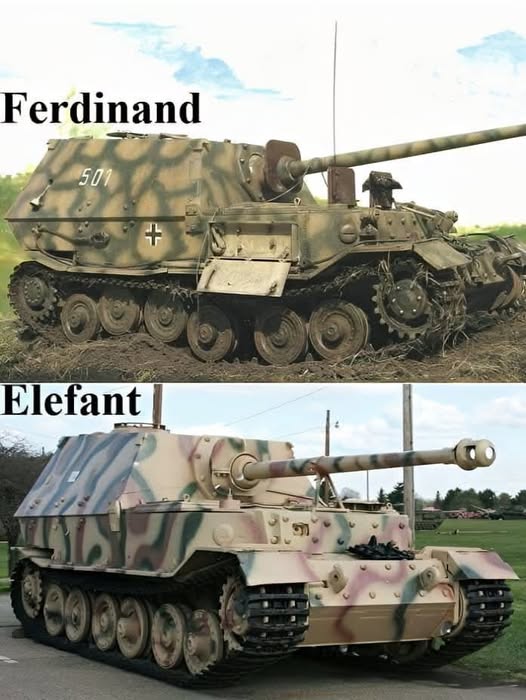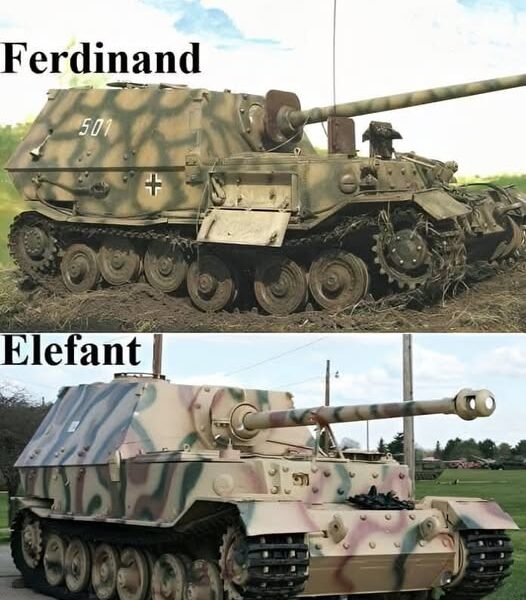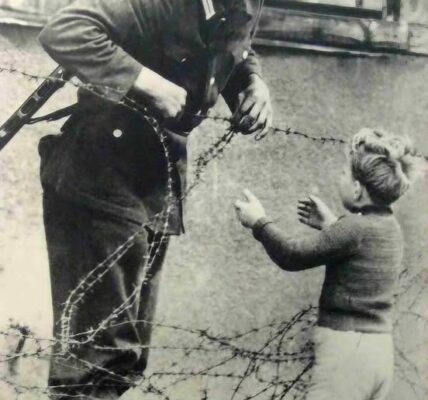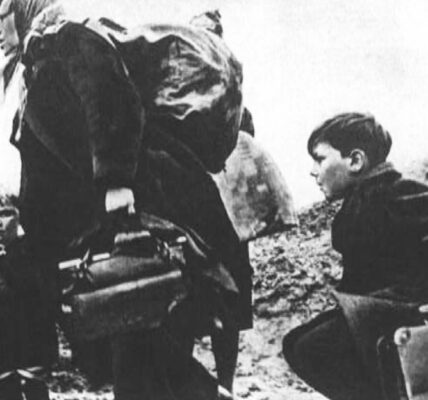
The names “Ferdinand” and “Elefant” are closely linked to World War II history and represent two different stages in the development of one of Germany’s most famous tank destroyers. These iconic machines, designed by Porsche AG, represent both technological innovation and the challenges of warfare. But what makes the Ferdinand and the Elefant so special, and why are they so closely related despite their differences?
The Ferdinand, named after the engineer Ferdinand Porsche, was a heavy tank destroyer that first saw action in the Battle of Kursk in 1943. Armed with its impressive 8.8 cm Pak 43/2 gun, the Ferdinand was a fearsome opponent on the battlefield. It was specifically designed to destroy enemy tanks at long range. Its thick armor provided excellent protection against enemy fire, but also made it very heavy and poorly maneuverable. This was one of its greatest weaknesses, as the Ferdinand was vulnerable to mines and flank attacks on the battlefield.
Following the experiences at Kursk, the surviving Ferdinand vehicles were modernized and renamed Elefant. The renaming was intended to reflect the improvements and adjustments made to address the weaknesses of the original. The Elefant received improved armor, an additional machine gun for close-range defense, and a more powerful engine to increase mobility. These modifications made the Elefant an even more effective tank destroyer, used in later phases of the war.

Despite their technological advances, both the Ferdinand and the Elefant struggled with the typical problems inherent in complex machines in an intense war environment. Their high production costs, low production numbers, and enormous maintenance requirements limited their use. Only 90 vehicles were built in total, keeping their role in the war relatively small. Nevertheless, they left a lasting impression on allies and enemies alike.

The story of Ferdinand and the Elefant also exemplifies the challenges of military innovation. While the Ferdinand was criticized for its strategic weaknesses, the Elefant demonstrated how technical weaknesses could be overcome through adaptation and improvement. Both vehicles are now symbols of the ambition and complexity of the German war machine.

Today, Ferdinand and the Elephant can be seen in museums and serve as testaments to a fascinating yet tragic era in history. Their development reflects not only technological prowess but also the limitations of design under the conditions of total war. Both names remain unforgettable and invite us to take a closer look at the stories and lessons of the past.










